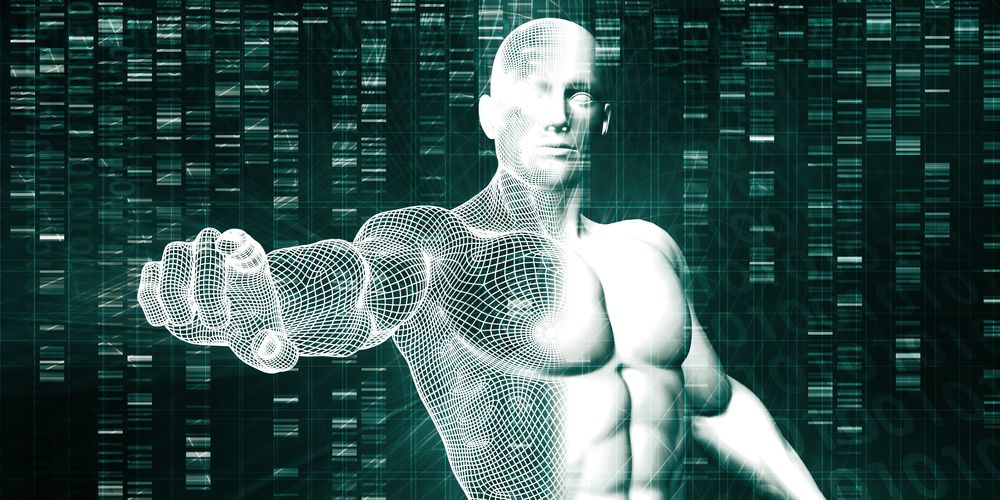DNA replication begins when the double helix, caught in a vice of proteins, melts, scientists have discovered.
A successful production trial by Australian battery technology innovator Nano-Nouvelle has proved its pioneering nanotechnology supports industrial-scale manufacture, with output rates 100 times faster.
The Sunshine Coast-based company is developing world-leading nanotechnology that can boost the energy storage capacity of lithium ion batteries by as much as 50 per cent. Lithium ion batteries are used in devices ranging from mobile phones and notebooks to and electric vehicles and home energy storage systems.
As well as proving its technology, Nano-Nouvelle has worked with companies worldwide to ensure its battery-boosting breakthrough is usable with today’s production lines.
Improving Precision with Quantum — A new Precise Quantum Current Source developed to ensure calibrated currents meet the new redefined International System of Units.
A precision quantum current source has been designed to calibrate currents in terms of the soon-to-be-redefined International System of Units.
Metrologists are conservative by nature, knowing that the premature adoption of a new measurement standard could lead to confusion in both science and commerce. So it is a big deal that the International System of Units (SI) is poised to undergo its first major overhaul since its birth in 1960. Two years from now at the General Conference on Weights and Measures in Paris, officials will adopt a new SI in which every unit can be obtained from fixed values of several fundamental constants [1]. All eyes are on the kilogram, which will no longer be defined by the mass of a cylinder of platinum-iridium alloy that has been kept in a Parisian vault since it was fabricated in 1889. Somewhat overlooked, however, are advances in standards for electrical resistance and voltage, without which the new SI would not be possible.
This is a BIG DEAL in QC, and Russian Scientists solved it.
Abstract: Scientists from the Institute of Physics and Technology of the Russian Academy of Sciences and MIPT have let two electrons loose in a system of quantum dots to create a quantum computer memory cell of a higher dimension than a qubit (a quantum bit). In their study published in Scientific Reports, the researchers demonstrate for the first time how quantum walks of several electrons can help to implement quantum computation.
“By studying the system with two electrons, we solved the problems faced in the general case of two identical interacting particles. This paves the way toward compact high-level quantum structures,” comments Leonid Fedichkin, Expert at the Russian Academy of Sciences, Vice-Director for Science at NIX (a Russian computer company), and Associate Professor at MIPT’s Department of Theoretical Physics.
In a matter of hours, a quantum computer would be able to hack through the most popular cryptosystem used even in your web browser. As far as more benevolent applications are concerned, a quantum computer would be capable of molecular modeling that takes into account all interactions between the particles involved. This in turn would enable the development of highly efficient solar cells and new drugs. To have practical applications, a quantum computer needs to incorporate hundreds or even thousands of qubits. And that is where it gets tricky.
Not posting for any political reasons. Only to show that this guy who is firmly behind Anti Aging tech will be a close adviser to the next President.
Peter Thiel, the billionaire venture capitalist and conservative libertarian, has long been a misfit in Silicon Valley.
Now as one of the tech industry’s main bridges to President-elect Donald Trump’s incoming administration, Mr. Thiel is playing a central role in helping shape the relationship with a president most tech titans didn’t want.
My new article on the future geopolitical challenges of genetic editing: http://motherboard.vice.com/read/genetic-editing-could-cause-the-next-cold-war #transhumanism
If China pursues human genetic enhancement and the US retreats under a conservative government, it could create a divide between the modified and the not, sewing the seeds of global conflict.
Progress with Alzheimers and this time approaching it from the direction of Tau as a target rather than Beta Amyloid. This therapy has been tested in people and whilst it is only the first step hopefully this will lead to an effective treatment for this horrific diseases and and end to the suffering it brings.
Progress towards immunotherapies that can clear tau for Alzheimers here. Most therapies are focused on misfolded amyloid-β proteins but this particular approach targets Tau and the first in human test has proceeded!
“The authors of the study have developed a vaccine that stimulates the production of an antibody that specifically targets pathological tau, discovering its “Achilles’ heel”. It is able to do this because healthy tau undergoes a series of changes to its structure forming a new region that the antibody attacks. This new region (the “Achilles’ heel”), while not present in healthy tau, is present in diseased tau early on. Therefore, the antibody tackles all the different varieties of pathological tau. In addition to this important specificity, the antibody is coupled to a carrier molecule that generates a considerable immune response with the added benefit that it is not present in humans, thus avoiding the development of an immune reaction towards the body itself.”
#aging #crowdfundthecure
In Brief A deeper look into studies that were previously conducted by Hungarian physicists has recently uncovered evidence of a fifth fundamental force of nature. If confirmed, it could stand as an explanation for dark matter.
To date, there are four conventionally known fundamental forces that hold the universe together—gravity, electromagnetism, and the strong and weak nuclear forces. But a closer look at previous studies conducted by Hungarian physicists, which hinted at a new force, has led a team of scientists to evidence that the anomaly in the data could actually be a fifth force of nature.
It should be noted that the groundbreaking claim is still a very long way from being confirmed, but the current data available is enough to push research into what this new force-carrying particle is (or may be).
WASHINGTON (AP) — All new cars and light trucks would be able to talk wirelessly with each other, with traffic lights and with other roadway infrastructure under a rule the Transportation Department proposed Tuesday. Officials say the technology holds the potential to dramatically reduce traffic deaths and transform driving.
Vehicle-to-vehicle communications, or V2V, enables cars to transmit their locations, speed, direction and other information ten times per second. That lets cars detect, for example, when another vehicle is about to run a red light, is braking hard, changing lanes or coming around a blind turn in time for a driver or automated safety systems to prevent a crash.
The technology has the potential to prevent or mitigate the severity of up to 80 percent of collisions that don’t involve alcohol or drugs, officials said.







